In 1911, a man named Milton Reeves started a company called the Reeves Sexto-Octo Company. Reeves was known for his inventions and had a successful business, the Reeves Pulley Company, that made parts for machines. But in the early 1910s, he turned his attention to automobiles, which were still relatively new and developing rapidly.
Reeves had an interesting idea about how to make cars better. At this time, roads were often rough and uneven, nothing like the smooth paved roads we have today. Driving could be a bumpy and uncomfortable experience. Tires were also not as durable and wore out faster on bad roads. Reeves believed that adding more wheels to a car could solve these problems.
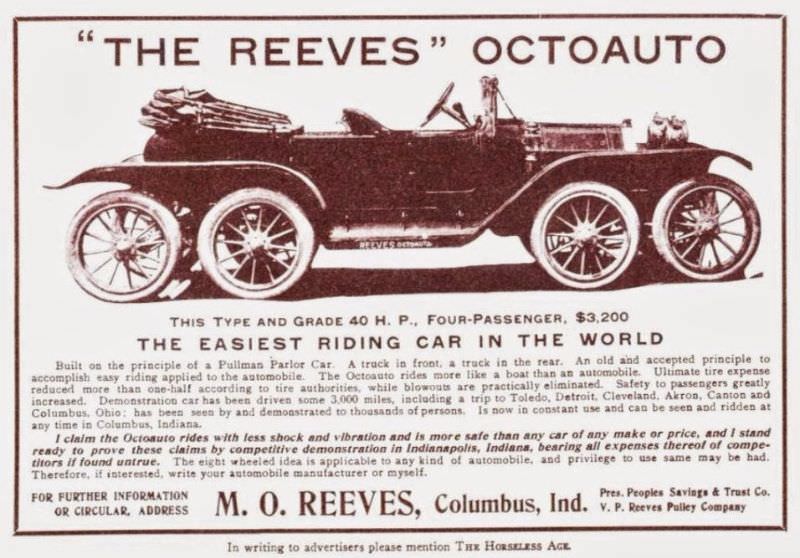
He took a model from 1910, an Overland, and decided to experiment with it. Instead of the standard four wheels that most cars had, he made a big change. He added four extra wheels to the car. This brought the total number of wheels on his modified Overland up to eight. Because “octo” means eight, he named this unusual vehicle the Reeves Octo-Auto.
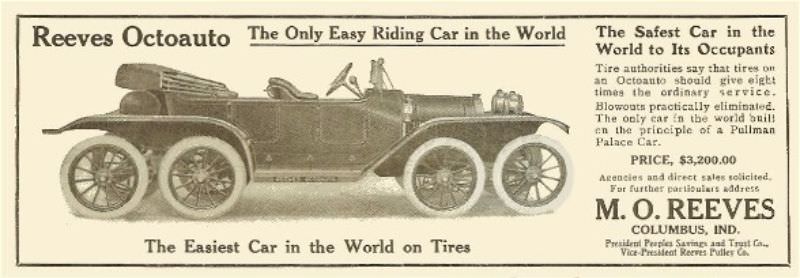
The design of the Octo-Auto was certainly different. It had two sets of wheels on each side of the car. So, looking at one side, you would see four wheels lined up one after another, like a small train track under the car body. This extended length and multiple wheels gave the car a very long appearance. It stretched out to be over 20 feet long, which is longer than many modern-day vehicles.
The thinking behind having eight wheels was about spreading out the weight of the car and its passengers. With the weight distributed over eight points touching the ground instead of just four, each wheel and tire carried less load. Reeves thought this would lead to a smoother ride because the wheels could handle bumps more independently. He also believed it would make the tires last much longer because they wouldn’t be working as hard individually.
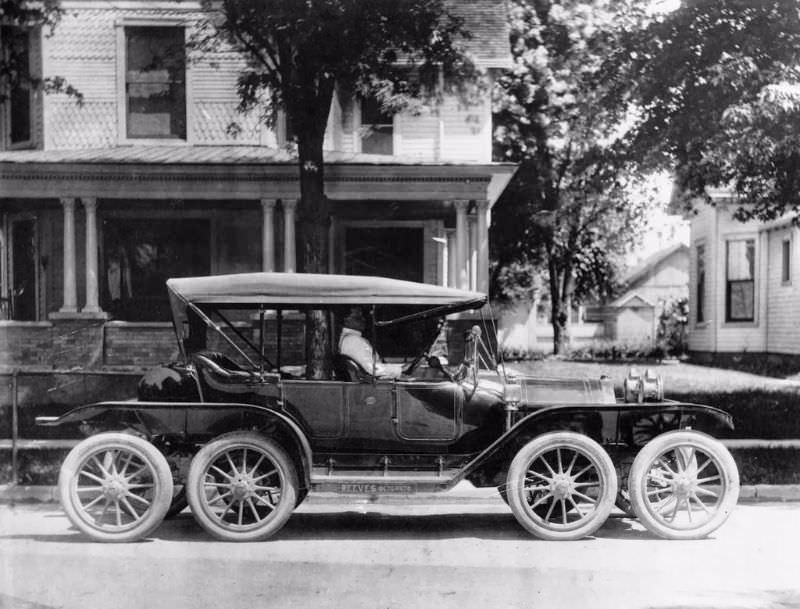
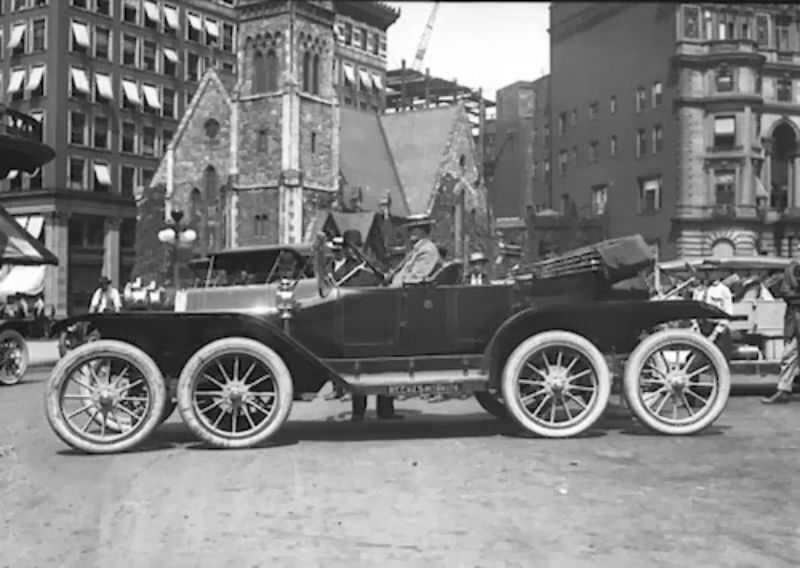
Safety was another reason for the multi-wheel design, according to Reeves. He claimed that if one tire blew out, the car wouldn’t suddenly drop or lose control because the other wheels nearby would support the vehicle. This seemed like a good idea for the sometimes unreliable tires of that era.
The Octo-Auto was a large and complex machine for its time. It was powered by a 40-horsepower engine. While 40 horsepower might not sound like much today, it was a respectable amount of power for a car in 1911. The car was designed to carry four passengers comfortably.
When it came to buying one, the Octo-Auto was very expensive. It retailed for $3200. To put that price in perspective, a popular and much simpler car like the Ford Model T touring car cost around $700 to $800 during the same period. The high price meant the Octo-Auto was a luxury item, out of reach for most people.
The look of the Octo-Auto got a lot of attention, not all of it positive over time. Decades later, TIME Magazine would famously call this car one of the most ugly cars ever produced. Its extreme length and multiple wheels gave it a very unconventional appearance compared to the standard cars of the period.
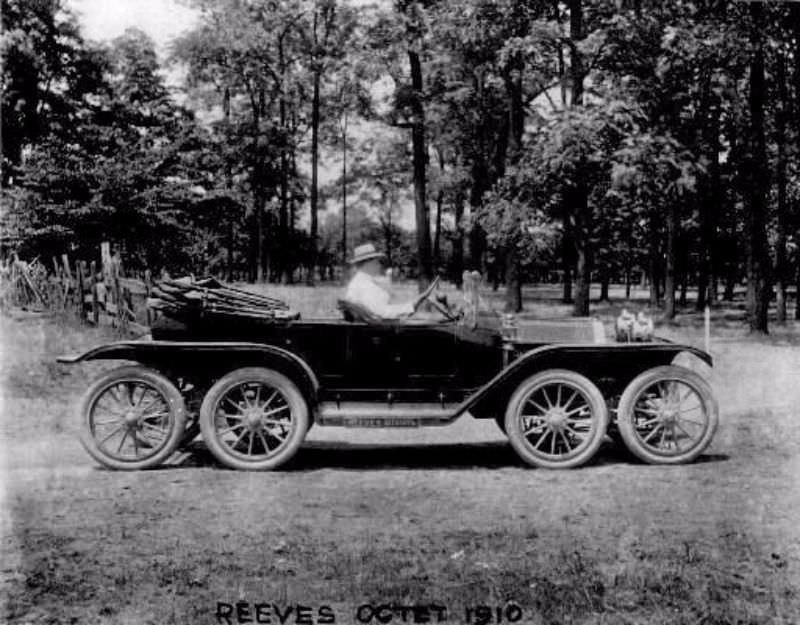
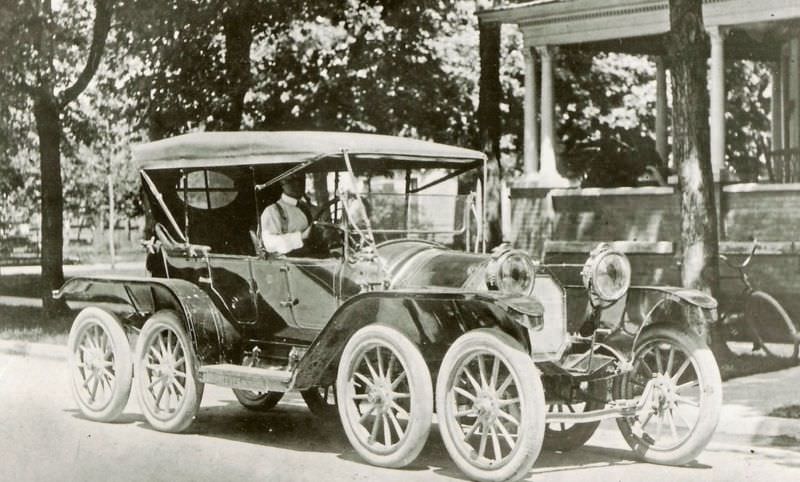
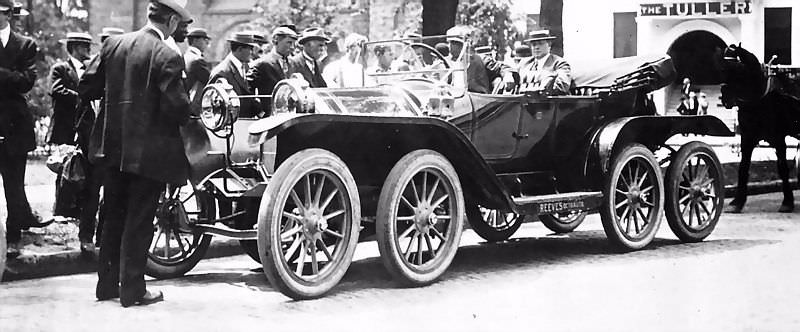
However, not everyone thought it was ugly or impractical at the time it was built. A famous writer and editor named Elbert Hubbard saw the Octo-Auto and praised it. Hubbard wrote positively about its comfort, agreeing with Reeves that the ride was smooth. He also highlighted its durability, suggesting the design made the car strong and able to handle difficult conditions.
Magazine advertisements for the 1911 Octo-Auto strongly promoted its unique benefits. They made bold claims based on the eight-wheel design. Ads stated it was “The Only Easy Riding Car In The World.” They also declared it was “The Safest Car In The World To Its Occupants,” emphasizing the safety feature of having extra wheels for support. Another key selling point in the ads was that the Octo-Auto was “The Easiest Car In The World On Tires,” directly addressing the issue of tire wear on the rough roads of the time. These slogans aimed to convince potential buyers that the high price was worth the promised comfort, safety, and lower tire costs.
Milton Reeves and his company didn’t stop with just the Octo-Auto. Since the company was named the Reeves Sexto-Octo Company, it suggests they also worked on a car with six wheels. This vehicle, known as the Sexto-Auto, likely came after the Octo-Auto. The Sexto-Auto kept the idea of having more than four wheels but simplified it slightly by using six instead of eight. This might have been an attempt to create a vehicle with some of the benefits of the Octo-Auto but perhaps with a less complicated design or a slightly lower cost. Information suggests the Sexto-Auto still used a multi-axle setup, possibly with one set of four wheels at the back and a standard two wheels at the front.
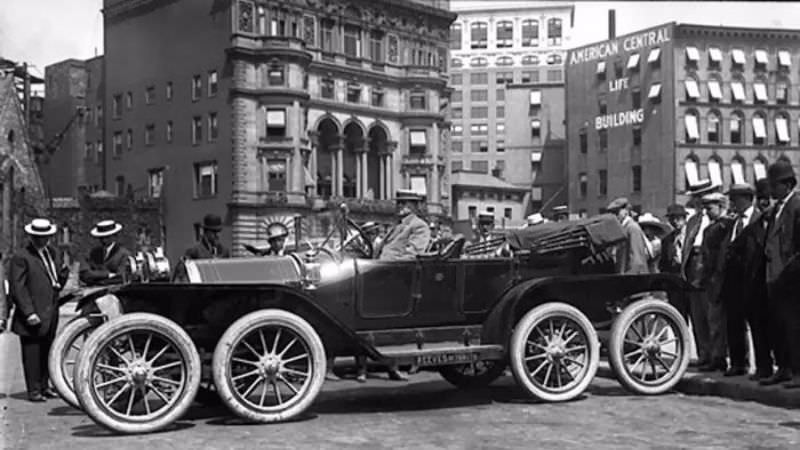
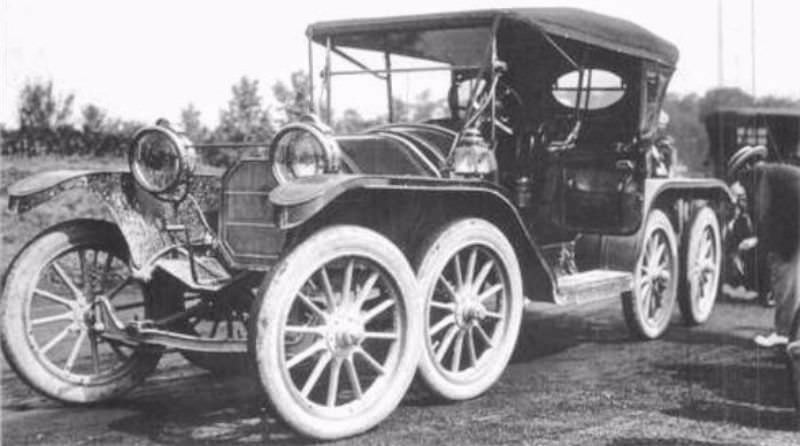

These multi-wheeled cars like the Octo-Auto and Sexto-Auto represented a different way of thinking about car design in the early 1900s. While other car makers were focusing on improving suspension systems or developing better tires, Reeves chose to tackle the problems of comfort and durability by simply adding more points of contact with the road. It was an inventive but complex solution.
The multi-wheel car project was part of the Reeves Pulley Company’s broader business activities. By 1914, the Reeves Pulley Company decided it wanted to sell off its engine manufacturing division. This part of the business, which likely supplied engines for their automotive experiments like the Octo-Auto and Sexto-Auto, was eventually purchased by the Cummings Machine Company of Minster, Ohio, in 1918. This decision to sell the engine business marked a move away from this type of manufacturing for Reeves.
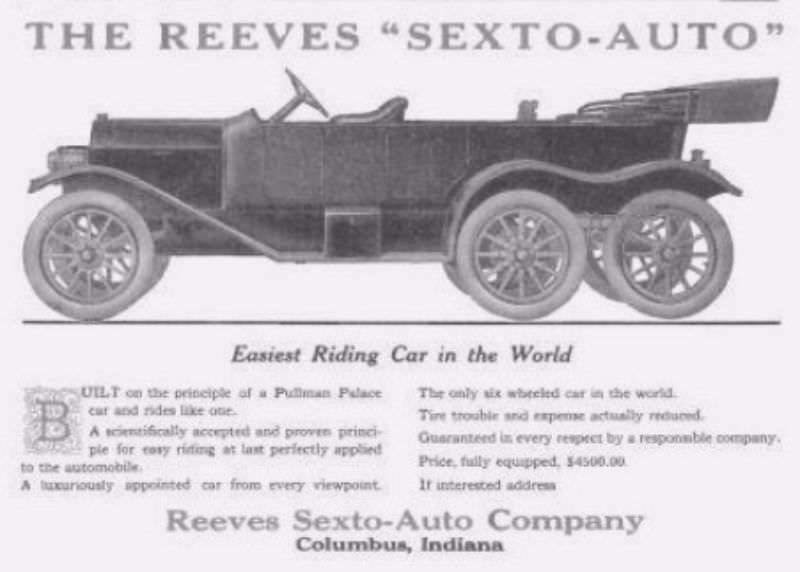
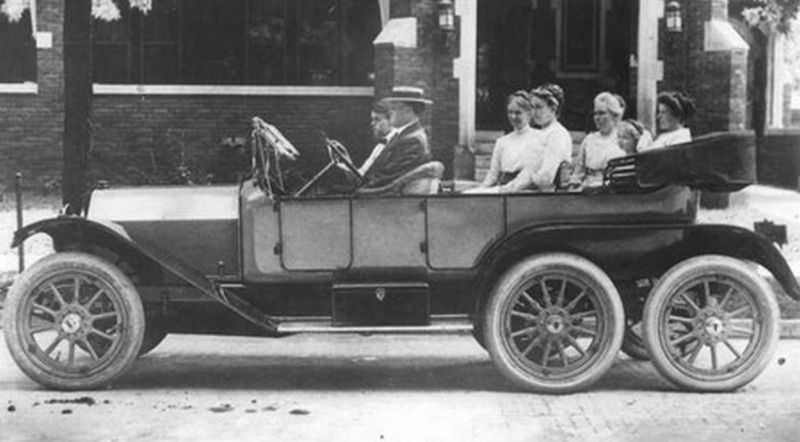
The Reeves Octo-Auto, despite the claims of comfort and safety and the praise from some, did not become a mainstream success. Its high price and very unusual appearance were likely major factors limiting sales. Only a few were ever built. The Sexto-Auto also remained an experimental or very limited production vehicle.
Even though the Octo-Auto didn’t change the future of car design, it is remembered today as a fascinating example of the wild and creative ideas people had during the early days of the automobile. Its unique look and the engineering thought behind it have made it a notable, if quirky, part of automotive history. In 2011, exactly one hundred years after it was built, the automotive website Hemmings featured the Octo-Auto in an April Fools’ Day article titled “World celebrates the centennial of the Octo-Auto,” showing that this strange eight-wheeled car still captures people’s imagination and serves as a reminder of a time when car design was wide open to experimentation.


